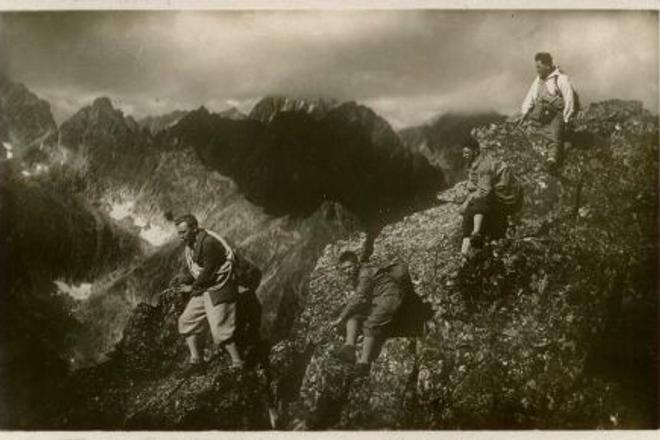IT WOULD be interesting to know whether these tourists back in 1937 ventured on a mountain climb with a mountain guide, or on their own. Given the difficult terrain of Východná Vysoká in the High Tatras, it is likely that this group of hikers was led by an experienced mountaineer, and that this photo was taken by the guide himself.
On the other hand, it must be said that the boys inching down the rock had probably not been properly trained, as they are scaling it along their backs, when they should be facing the rocks.
Mountain guides appeared in the Tatras along with the first tourists. In the old days, only miners, hunters and shepherds ventured into the mountains, who first welcomed tourists with mistrust. The situation changed when the locals realised they could make money off the tourists by charging to carry their luggage.
For example, Hans Gross from Stará Lesná earned money this way when, in 1793, he accompanied British naturalist Robert Townson in the Tatras. Swedish botanist Goeran Wahlberg, in 1813, used the services of Kežmarok-based gold-miner David Fabry. German zoologist Gustav Hartlaub used to wander here, too, guided by a forester from Javorina, Šimon Fischer.
When hikers and tourists started visiting the Tatras in the 19th century more regularly, a small group of people emerged for whom guiding became a reliable form of employment. In 1873, the Hungarian Carpathian Association was established and started organising and supervising the guides, all of whom were given uniforms, badges and registry books. Thanks to these books, we know a lot, not just about the mountain treks, but also the guides.
Sometime around 1905, tourists started hiking the mountains without guides, which up until then was unthinkable. However, mountain guides did not disappear – the nature of their work gradually shifted, from that of helpers into equal partners of their clients, which is how things remain today.


